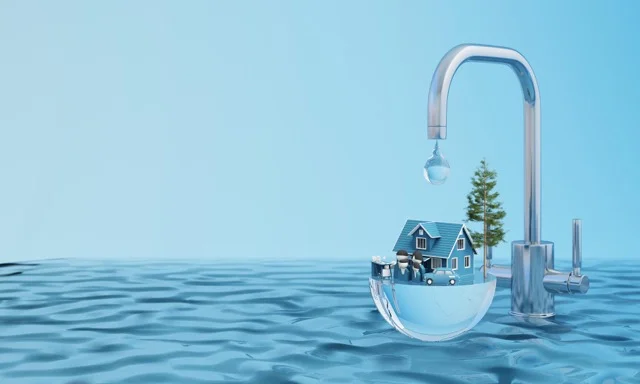The Main Principles Of Reclaim Waste
Wiki Article
The Best Guide To Reclaim Waste
Table of ContentsThe smart Trick of Reclaim Waste That Nobody is Talking AboutThe Best Guide To Reclaim WasteFacts About Reclaim Waste UncoveredReclaim Waste Things To Know Before You Get ThisHow Reclaim Waste can Save You Time, Stress, and Money.
Discover the kinds, occurrences, and kinds of liquid waste. Domestic sewer waste refers to the waste and items from a household septic system. This kind of waste is produced by human beings in houses, institutions, and various other buildings. This only includes septic systems that have a drain area. The correct administration and disposal of residential sewer waste require fluid waste to be transferred to a sewer therapy plant where the correct approaches and devices are put on purify and throw away waste.
Commercial waste typically consists of possible risks, such as flammable products or a blend of fluid and solid waste products, and calls for an advanced and in-depth disposal procedure. The disposal of industrial waste commonly entails the filtration of waste prior to transportation to ensure secure and correct disposal. Hazardous waste is produced from byproducts and overflow of industrial processes and manufacturing.
This sort of waste can not use the same sewage monitoring transportation or processes as septic or business fluids. The industrial waste management procedure requires the inspection and screening of fluid waste before it goes through the disposal process (liquid waste removal melbourne). Runoff waste is the liquid waste that comes from drainage and excess stormwater in highly populated areas or cities
Drainage waste can trigger contamination and flooding if not taken care of effectively. Ensuring correct waste management can protect against disasters and decrease environmental harm.
More About Reclaim Waste
Contact PROS Solutions today to find out about our waste administration and disposal solutions and the correct methods to look after the liquid waste you generate.(https://www.edocr.com/v/pd6avrzq/leonaube33101/reclaim-waste)Do you recognize what occurs to your water when you disengage, flush the commode or drain the cleaning maker? No? Well, it deserves knowing. This supposed 'wastewater' is not just an important resource however, after therapy, will certainly be released to our land, waterways or the ocean. Used water from commodes, showers, baths, cooking area sinks, laundries and commercial processes is called wastewater.

water made use of to cool machinery or tidy plant and devices). Stormwater, a kind of wastewater, is runoff that streams from farming and urban locations such as roof coverings, parks, gardens, roadways, courses and rain gutters into stormwater drains, after rainfall. Stormwater moves without treatment directly to local creeks or rivers, eventually getting to the ocean.
The Reclaim Waste Ideas
In Queensland, the majority of wastewater is treated at sewage treatment plants. Wastewater is transported from residential or commercial sites with a system of drains and pump stations, referred to as sewerage reticulation, to a sewage treatment plant. Local governments develop, preserve and run most sewage therapy plants. Operators are licensed under the Environmental Management Act 1994 to release treated wastewater at an acceptable environmental criterion into waterways.The Department of Natural Resources encourages regional governments regarding managing, operating and maintaining sewage systems and therapy plants. In unsewered locations, regional governments might call for this hyperlink owners to set up individual or home sewage therapy systems to deal with domestic wastewater from toilets, kitchens, restrooms and laundries. The Department of Natural Resources authorizes making use of home systems when they are proven to be efficient.
A lot of stormwater obtains no therapy. In some brand-new neighborhoods, treatment of some stormwater to eliminate clutter, sand and gravel has begun making use of gross contaminant traps. Wastewater therapy happens in 4 stages: Gets rid of solid matter. Larger solids, such as plastics and other items wrongly released to drains, are gotten rid of when wastewater is passed via displays.
Wastewater then moves into huge tanks where solids work out and are removed as sludge. Grease and residue are skimmed from the surface. Utilizes little living organisms referred to as micro-organisms to damage down and get rid of continuing to be liquified wastes and fine bits. Micro-organisms and wastes are incorporated in the sludge. Removes nitrogen and phosphorus nutrients that can cause algal flowers in our waterways and intimidate aquatic life.
Facts About Reclaim Waste Revealed
Nutrient removal is not readily available at all sewage therapy plants because it requires expensive specialised tools. It is ending up being more usual in Queensland. Clear fluid effluent created after treatment might still consist of disease-causing micro-organisms. If this effluent is launched into waterways such as rivers or the sea, the micro-organisms will at some point die out.
The majority of wastewater flows into the sewage system. Under the Act, local governments carry out approvals and permits for ecologically pertinent activities (Periods) entailing wastewater launches that could have a regional influence.
The Single Strategy To Use For Reclaim Waste
Otherwise, samples are taken for lab analysis. Commonly numerous tests are needed to develop the degrees of each of the various pollutants such as oils, heavy steels and chemicals in water. Monitoring provides factual information about water high quality and can verify that permit conditions are being satisfied. The info acquired via monitoring provides the basis for making water high quality choices.Report this wiki page